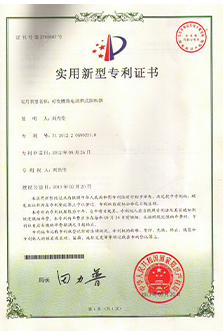 Afrikaans
Afrikaans  Albanian
Albanian  Amharic
Amharic  Arabic
Arabic  Armenian
Armenian  Azerbaijani
Azerbaijani  Basque
Basque  Belarusian
Belarusian  Bengali
Bengali  Bosnian
Bosnian  Bulgarian
Bulgarian  Catalan
Catalan  Cebuano
Cebuano  Corsican
Corsican  Croatian
Croatian  Czech
Czech  Danish
Danish  Dutch
Dutch  English
English  Esperanto
Esperanto  Estonian
Estonian  Finnish
Finnish  French
French  Frisian
Frisian  Galician
Galician  Georgian
Georgian  German
German  Greek
Greek  Gujarati
Gujarati  Haitian Creole
Haitian Creole  hausa
hausa  hawaiian
hawaiian  Hebrew
Hebrew  Hindi
Hindi  Miao
Miao  Hungarian
Hungarian  Icelandic
Icelandic  igbo
igbo  Indonesian
Indonesian  irish
irish  Italian
Italian  Japanese
Japanese  Javanese
Javanese  Kannada
Kannada  kazakh
kazakh  Khmer
Khmer  Rwandese
Rwandese  Korean
Korean  Kurdish
Kurdish  Kyrgyz
Kyrgyz  Lao
Lao  Latin
Latin  Latvian
Latvian  Lithuanian
Lithuanian  Luxembourgish
Luxembourgish  Macedonian
Macedonian  Malgashi
Malgashi  Malay
Malay  Malayalam
Malayalam  Maltese
Maltese  Maori
Maori  Marathi
Marathi  Mongolian
Mongolian  Myanmar
Myanmar  Nepali
Nepali  Norwegian
Norwegian  Norwegian
Norwegian  Occitan
Occitan  Pashto
Pashto  Persian
Persian  Polish
Polish  Portuguese
Portuguese  Punjabi
Punjabi  Romanian
Romanian  Russian
Russian  Samoan
Samoan  Scottish Gaelic
Scottish Gaelic  Serbian
Serbian  Sesotho
Sesotho  Shona
Shona  Sindhi
Sindhi  Sinhala
Sinhala  Slovak
Slovak  Slovenian
Slovenian  Somali
Somali  Spanish
Spanish  Sundanese
Sundanese  Swahili
Swahili  Swedish
Swedish  Tagalog
Tagalog  Tajik
Tajik  Tamil
Tamil  Tatar
Tatar  Telugu
Telugu  Thai
Thai  Turkish
Turkish  Turkmen
Turkmen  Ukrainian
Ukrainian  Urdu
Urdu  Uighur
Uighur  Uzbek
Uzbek  Vietnamese
Vietnamese  Welsh
Welsh  Bantu
Bantu  Yiddish
Yiddish  Yoruba
Yoruba  Zulu
Zulu rubber impact roller
The Importance of Rubber Impact Rollers in Industrial Applications
Rubber impact rollers are integral components in many industries, serving pivotal roles that enhance productivity, efficiency, and safety. These rollers are designed to withstand harsh conditions while providing effective support and cushioning for various conveyor systems. Understanding the benefits and applications of rubber impact rollers can shed light on their critical function in modern industrial setups.
What are Rubber Impact Rollers?
Rubber impact rollers are specialized rollers that are primarily used in belt conveyor systems. Constructed from high-quality rubber, they are designed to absorb shock and reduce wear and tear on the conveyor belt. These rollers are often installed at the loading points of conveyors, where the impact from materials being loaded can cause significant stress. By using rubber impact rollers, industries can significantly prolong the life of their equipment and enhance operational efficiency.
Key Benefits of Rubber Impact Rollers
1. Shock Absorption One of the primary advantages of rubber impact rollers is their ability to absorb shock. When materials drop onto the conveyor belt, the impact can cause damage to both the belt and the roller system. Rubber’s elasticity allows it to cushion this impact, preventing excessive wear and reducing maintenance costs.
2. Reduced Noise Levels In many industrial settings, noise pollution can be a concern. Rubber impact rollers help to diminish the noise produced during the operation of conveyor systems. This not only creates a more pleasant working environment but also minimizes the risks associated with noise exposure for employees.
3. Durability and Longevity Rubber is known for its durability, especially when reinforced with other materials. Rubber impact rollers can withstand harsh environmental conditions, including extreme temperatures and abrasive materials. This durability ensures that they remain functional over time, reducing the need for frequent replacements.
rubber impact roller

4. Improved Safety Safety is a top priority in any industrial operation. Rubber impact rollers contribute to safer working conditions by minimizing the risk of belt misalignment and damage. This reduces the potential for spills and accidents, protecting both workers and equipment.
5. Cost-Effectiveness While the initial investment in rubber impact rollers may be higher than steel alternatives, the long-term benefits outweigh the costs. Reduced maintenance, fewer replacements, and enhanced efficiency lead to significant savings over time. Businesses can often recoup their investment through increased productivity.
Applications of Rubber Impact Rollers
Rubber impact rollers are widely used across various industries. Their versatility allows them to be employed in mining, recycling, agriculture, and manufacturing sectors. In the mining industry, for example, they handle heavy materials like ores and coal, providing essential cushioning during transport. In recycling operations, these rollers assist in transporting mixed waste materials while minimizing damage to the conveyor systems.
Agricultural companies also utilize rubber impact rollers in transporting grain and other products, ensuring a smooth flow from the field to storage. In manufacturing, they are crucial in various assembly lines where materials are fed through conveyor belts at high speeds. The ability to absorb shock and reduce wear makes them invaluable across these diverse applications.
Conclusion
In conclusion, rubber impact rollers play a vital role in enhancing the performance and longevity of conveyor systems across various industries. Their ability to absorb shock, reduce noise, and improve safety makes them a preferred choice for many industrial applications. As businesses continue to prioritize efficiency and cost-effectiveness, the demand for rubber impact rollers is expected to grow. By investing in this technology, companies not only enhance their operational capabilities but also contribute to a safer and more sustainable working environment. As industries evolve, the significance of these rubber components will undoubtedly remain at the forefront of technological advancement and operational excellence.
-
Revolutionizing Conveyor Reliability with Advanced Rubber Lagging PulleysNewsJul.22,2025
-
Powering Precision and Durability with Expert Manufacturers of Conveyor ComponentsNewsJul.22,2025
-
Optimizing Conveyor Systems with Advanced Conveyor AccessoriesNewsJul.22,2025
-
Maximize Conveyor Efficiency with Quality Conveyor Idler PulleysNewsJul.22,2025
-
Future-Proof Your Conveyor System with High-Performance Polyurethane RollerNewsJul.22,2025
-
Driving Efficiency Forward with Quality Idlers and RollersNewsJul.22,2025





























